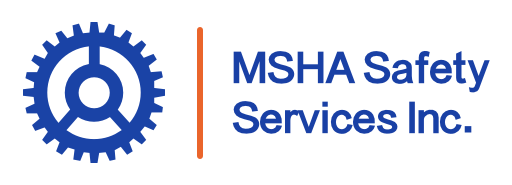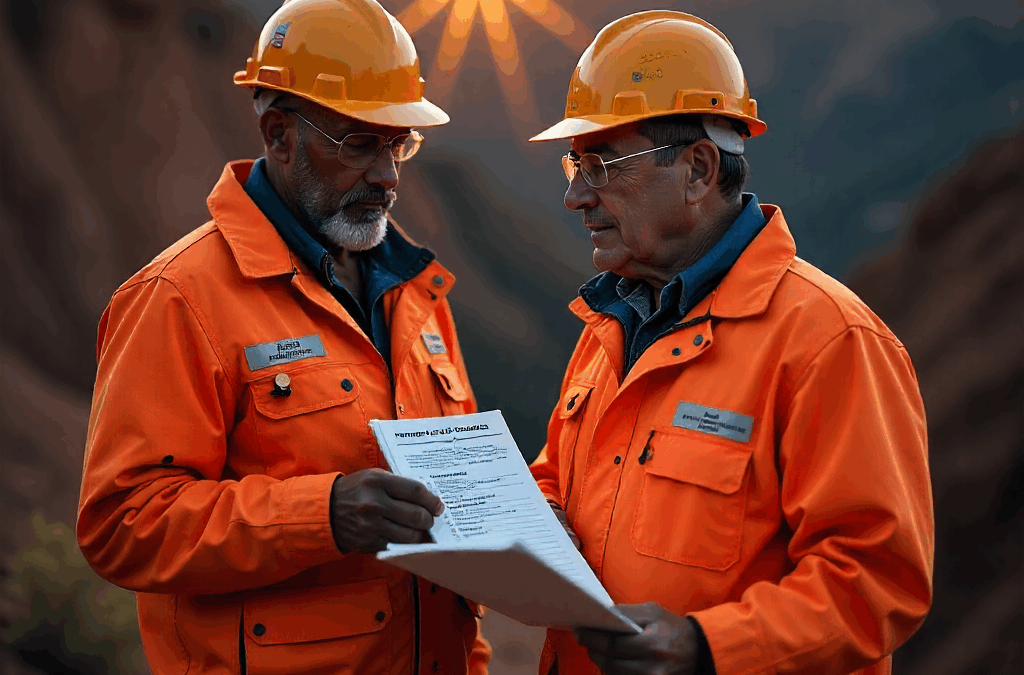Slip and fall incidents continue to be a leading cause of injury in mining operations, especially around heavy equipment and machinery. These accidents often occur during routine tasks—stepping onto a platform, climbing into a cab, or navigating around poorly maintained access points. To improve safety and reduce these risks, mining operations must adopt comprehensive guidelines focused on both equipment design and daily maintenance.
Reducing slip and fall accidents in mining isn’t just about better traction or cleaner surfaces—it involves a systemic approach that includes preventing fall hazards with proper access and maintenance and optimizing worker safety through the use of proper access systems in mining. This article explores key design considerations, equipment features, and safety practices that collectively build a safer, more compliant mining environment.
The Impact of Slip and Fall Accidents in the Mining Industry
Mining is one of the most physically demanding and hazardous industries in the world. Reducing slip and fall accidents in mining is not just about following rules—it’s about protecting lives and ensuring that workers return home safely every day. Falls are among the leading causes of injuries in mines, often resulting in serious trauma or even fatalities.
When slips happen near heavy machinery or at elevated access points, the consequences can be severe. Beyond the human toll, these accidents lead to lost productivity, equipment damage, and increased insurance and compensation costs. It’s crucial that mining companies prioritize fall prevention from both an ethical and operational standpoint.
Common Causes of Slips and Falls Around Mining Equipment
Slips and falls around mining equipment often result from a combination of physical hazards and human factors. Wet or oily surfaces, loose gravel, uneven walkways, poor lighting, and equipment design flaws are all common contributors. Additionally, improper footwear, rushing to complete tasks, or climbing onto machinery without proper steps or handholds can increase the risk. Identifying and mitigating these causes is a major step in reducing slip and fall accidents in mining.
Design Considerations for Safer Mining Machinery Access
To minimize fall risks, machinery should be designed with human use in mind. Steps should be evenly spaced, surfaces should be slip-resistant, and access points should be easy to reach without overextension. Visibility of access areas also matters—workers should not have to guess where to place their feet.
Using standardized step heights, handrails, and anti-slip treads can make a huge difference. Engineers must consult with safety experts and operators to ensure every piece of equipment promotes safe interaction.
Non-Slip Surfaces and Tread Materials: What Works Best in Mines?
Non-slip materials are vital for mine safety. Rubberized grates, textured steel treads, and high-friction coatings can all reduce the likelihood of falls. Surfaces should be resistant to water, oil, mud, and chemicals common in mining environments.
Anti-slip tapes or bolt-on treads can also be applied to existing equipment. Proper installation and regular inspection ensure these materials stay effective over time. Choosing the right surface treatment based on the specific conditions of the mine is a proactive way of reducing slip and fall accidents in mining.
Guardrails, Handholds, and Access Points: Key Safety Enhancements
Simple design features can save lives. For example:
- Guardrails around elevated platforms, handholds near entry points, and clear, unobstructed access routes help prevent missteps.
- Equipment should include securely mounted grab handles within easy reach and positioned so workers don’t have to stretch or twist to use them.
- Wide, stable platforms and consistent stair or ladder designs can help reduce confusion and accidents.
These physical aids not only enhance safety but also build worker confidence and reduce fatigue.
Choosing Machinery with Built-In Slip Prevention Features
When procuring new equipment, mine operators should look for models that include built-in safety features. These might include self-cleaning steps, high-visibility markings, ergonomic handrails, and sealed flooring materials that resist slick build-up. Manufacturers often provide options specifically designed for harsh conditions. By prioritizing these features, companies show a strong commitment to reducing slip and fall accidents in mining.
Maintaining Equipment to Prevent Slippery Conditions
Safety isn’t just about design—it’s also about maintenance. Dirt, grease, and moisture can quickly turn a safe surface into a slippery hazard. Regular cleaning schedules, inspection routines, and prompt repairs of worn or damaged surfaces are essential. Drainage systems must be checked to ensure water doesn’t pool on walkways or machinery. Even the best-designed equipment can become unsafe if not properly cared for.
Operator Training for Safe Entry and Exit from Machinery
Training plays a major role in preventing falls. Workers must understand how to safely mount and dismount machinery, how to check for hazards, and how to report unsafe conditions. Training should be hands-on and repeated regularly, especially when new equipment is introduced. Emphasizing three-point contact—two hands and one foot or two feet and one hand at all times—helps reinforce safe habits. Well-trained operators are a key line of defense in reducing slip and fall accidents in mining.
Safety Standards and Compliance for Access Equipment in Mining
Mining companies must comply with safety standards such as those from MSHA (Mine Safety and Health Administration) and OSHA (Occupational Safety and Health Administration). These standards outline requirements for stairs, ladders, platforms, and fall protection systems. Staying current with these guidelines ensures legal compliance and fosters a culture of safety. Documenting inspections, training, and upgrades helps companies stay accountable and prepared for audits.
Preventing Fall Hazards with Proper Access and Maintenance
Proper access design and equipment maintenance are critical to preventing fall hazards in mining. If a machine is hard to climb, workers may take shortcuts that put them at risk. If surfaces are rarely cleaned, even the best treads won’t help. Consistent access audits, hazard reports, and maintenance logs help identify and resolve risks early. Companies that invest in regular upkeep tend to experience fewer fall incidents and build stronger safety records.

Optimizing Worker Safety: The Importance of Proper Access Systems in Mining
Access systems include ladders, stairs, walkways, and platforms. Well-designed access systems improve workflow and morale by reducing fatigue and injury. This is why the importance of proper access systems in mining cannot be overstated. Workers need to trust the surfaces they walk on and the steps they climb. Clear signage, consistent layouts, and safety-focused design all contribute to a healthier, more productive environment.
Proven Practices from Mining Sites That Reduced Slip Incidents
Some mining operations have significantly lowered fall incidents by implementing smart practices:
- Retrofitting older equipment with modern treads and rails
- Installing motion-sensor lighting near machinery
- Using brightly colored, high-contrast anti-slip coatings
- Conducting daily equipment checks with a focus on slip risks
- Creating incentive programs that reward safe behavior
These real-world tactics show that reducing slip and fall accidents in mining is achievable with the right strategies.
Slip Prevention Starts with Smarter Design and Safer Habits
Preventing slip and fall accidents in mining requires a holistic approach—from design and training to maintenance and compliance. By implementing safety-focused engineering, investing in non-slip materials, and ensuring thorough training, mining companies can protect their most valuable resource: their workers. Safer machines, smarter habits, and stronger systems pave the way to fewer accidents and a more productive mine.

